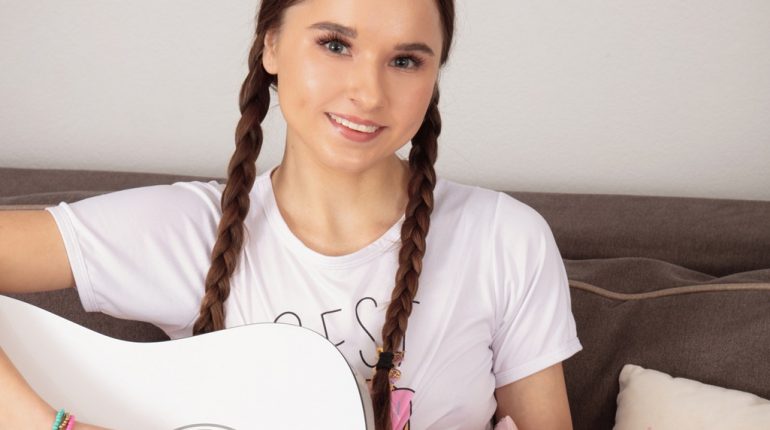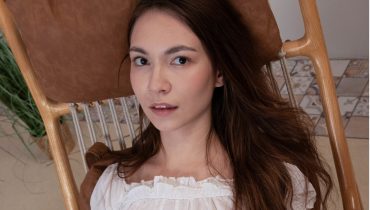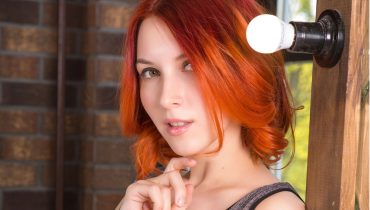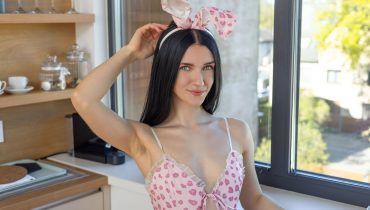For years, Mia Ross lived between exhaustion and overdrive. “I’d go to bed tired but wide awake,” she recalls. “My brain wouldn’t shut off — I’d lie there counting hours until sunrise.” At first, she blamed stress from her demanding marketing job, but the sleepless nights turned into months of fatigue. “It wasn’t just tiredness anymore,” she says. “It was fear — fear of not sleeping.”
Her doctor called it chronic insomnia and prescribed sleeping pills, but Mia hesitated. “I didn’t want to depend on medication,” she explains. “I wanted to sleep because my body remembered how, not because a pill forced it.” What followed was a two-year journey into discovering how to treat insomnia naturally — through lifestyle change, therapy, and modern science-backed tools.
When Sleeplessness Becomes a Cycle
Mia’s story isn’t rare. According to the Sleep Foundation, more than 30% of American adults experience symptoms of insomnia, and about 10% live with chronic forms that last for months or years. “I was part of that 10%,” she says. “The more I worried about sleep, the harder it became.”
Each night followed a familiar pattern: late scrolling on her phone, trying every trick — chamomile tea, melatonin gummies, even lavender diffusers. “Nothing worked consistently,” she says. “I’d sleep two nights fine, then go three nights without rest.” She started feeling disconnected from reality. “When you’re sleep-deprived, everything becomes harder — thinking, working, even feeling joy.”
It wasn’t until Mia stumbled upon an online article from the Mayo Clinic about cognitive behavioral therapy for insomnia (CBT-I) that her approach shifted. “It said insomnia isn’t just about not sleeping — it’s about how your brain reacts to not sleeping,” she explains. “That line changed everything.”
Breaking the Fear of Sleep: Mia’s Turning Point
Mia began working with a sleep therapist online. “At first, I thought therapy couldn’t possibly fix insomnia,” she admits. “But I was wrong.” Her therapist introduced her to CBT-I, a structured, evidence-based approach that retrains the mind and body to sleep naturally. “It wasn’t easy,” she says. “I had to unlearn years of anxiety around bedtime.”
The process started with sleep restriction — limiting time in bed to match her actual sleep hours. “That sounded crazy,” Mia laughs. “Why would sleeping less help me sleep more?” But the logic made sense. By staying in bed only when sleepy, she rebuilt her brain’s association between bed and rest instead of frustration. “After two weeks, I started falling asleep faster,” she recalls. “It was like my body remembered what to do.”
Another breakthrough came from cognitive reframing. “My therapist helped me stop catastrophizing,” she says. “Instead of thinking ‘I’ll be a wreck tomorrow,’ I learned to say, ‘Even if I sleep less, I’ll get through the day.’ That shift reduced the pressure — and paradoxically, helped me relax.”
According to Harvard Health, CBT-I is as effective as sleep medication for many patients and carries no side effects. It combines behavioral strategies (like maintaining consistent wake times) with cognitive tools that rewire thought patterns around rest. “It’s not instant,” Mia admits, “but it’s real healing — not sedation.”
Understanding the Science of Natural Sleep
As Mia continued therapy, she became fascinated with the science behind sleep. She learned that the body’s internal clock — the circadian rhythm — regulates the sleep-wake cycle through hormones like melatonin and cortisol. “I used to go to bed at midnight one day and 9 p.m. the next,” she says. “No wonder my body was confused.”
Her therapist helped her reset this rhythm through strict routine: waking at 7 a.m. every day, getting morning sunlight, and avoiding naps. “The sunlight trick blew my mind,” she says. “Just 10 minutes outside signals your brain to produce melatonin at night.” The CDC and National Heart, Lung, and Blood Institute confirm that light exposure is one of the strongest cues for healthy circadian alignment.
Mia also learned about sleep hygiene — habits that promote better rest. “No caffeine after noon, no screens before bed, no heavy dinners,” she lists. She transformed her bedroom into a sanctuary: cool temperature, blackout curtains, white noise. “I realized my room used to look like a workspace — laptop cords, bright lights. Now it looks like peace.”
Exploring Natural Remedies and Techniques
Although Mia avoided prescription medication, she experimented with natural aids under her doctor’s guidance. “Magnesium glycinate was a game changer,” she says. Studies from the National Library of Medicine suggest magnesium helps regulate neurotransmitters that calm the nervous system. “I started taking 200 mg before bed, and it felt like my body could finally exhale.”
She also used relaxation techniques to quiet her mind. “Breathing became my medicine,” she says. Her routine included 4-7-8 breathing (inhale 4 seconds, hold 7, exhale 8) and progressive muscle relaxation — tensing and releasing each muscle group slowly. “It’s impossible to panic when you’re focused on breathing,” she laughs. The Cleveland Clinic supports these exercises as evidence-based tools for reducing insomnia caused by stress and anxiety.
When thoughts spiraled, Mia used mindfulness meditation. “I’d sit in bed and focus on sounds — not silence,” she explains. “My mind stopped fighting the night.” Apps like Calm and Headspace helped guide her practice. “It wasn’t about clearing thoughts, it was about observing them,” she says. “Once I stopped fearing them, they lost their power.”
Nutrition and Movement for Better Sleep
Mia’s transformation extended beyond bedtime. “I realized my daytime habits dictated my night,” she says. She started eating more whole foods — leafy greens, salmon, walnuts, and fruits rich in tryptophan and vitamin B6, which help serotonin and melatonin production. “I swapped my afternoon latte for herbal tea,” she says. “That alone cut my restlessness in half.”
She also incorporated gentle exercise. “High-intensity workouts at night kept me wired,” she says. “Now I walk or stretch instead.” The Healthline and Sleep Foundation note that moderate daily activity improves sleep onset and quality — but timing matters. “Evening yoga, slow and mindful, helps me release the day.”
Technology Meets Mindfulness: Mia’s Modern Approach
Mia blended traditional methods with smart technology. “Ironically, my phone helped fix my sleep,” she jokes. She used an app called CBT-i Coach, developed by the U.S. Department of Veterans Affairs, which guided her through daily sleep logs and relaxation exercises. “It taught me patterns — when I slept best, what triggered bad nights.”
She also used wearable devices to track sleep quality. “Seeing data gave me perspective,” she says. “If I got five hours of deep sleep, that was still progress.” But she avoided obsession. “The goal wasn’t perfect numbers — it was peace.”
One surprising helper came from sound therapy. “Brown noise worked better than white noise for me,” she says. “It felt like a hug for my brain.” The Sleep Foundation confirms that low-frequency sounds can reduce nighttime awakenings and soothe the nervous system. Mia’s nightly playlist now includes rainfall, piano, and ocean waves. “My brain finally learned to associate those sounds with rest,” she smiles.
What Worked — and What Didn’t
Over two years of trial and error, Mia learned that not every natural remedy delivers. “Melatonin worked for a while, then stopped,” she says. The Mayo Clinic notes that melatonin can help regulate sleep timing but isn’t ideal for long-term use. “Your body stops responding if you rely on it too much,” she says. Herbal teas were hit or miss — valerian helped, but passionflower made her groggy. “It’s not one-size-fits-all,” she adds. “What calms one person might overstimulate another.”
What consistently worked, however, were structure and mindset. “Sleep is a relationship,” Mia says. “You can’t force it — you have to nurture it.” She built a bedtime routine anchored by predictability: lights dimmed at 9:30, journaling by hand, a warm shower, and gratitude notes. “It sounds simple,” she says, “but that predictability tells your body, ‘We’re safe now. We can rest.’”
She also learned to separate rest from performance. “I used to treat sleep like a task — something to conquer,” she says. “Now it’s something to receive.”
Mia’s Advice for Treating Insomnia Without Medication
After reclaiming her sleep naturally, Mia now mentors others through an online wellness forum. Her top advice reflects both science and compassion:
- 1. Rebuild trust with your body: “Insomnia makes you doubt yourself. But your body hasn’t forgotten how to sleep — it just needs safety to do it.”
- 2. Create a bedtime boundary: “Turn off screens an hour before bed. Blue light suppresses melatonin, and social media spikes cortisol.”
- 3. Practice acceptance: “If you can’t sleep, rest anyway. Lying calmly still restores the nervous system.”
- 4. Avoid quick fixes: “Supplements and gadgets help, but consistency heals. Pick two habits and stick to them for a month.”
- 5. Seek professional help if needed: “CBT-I isn’t self-help fluff — it’s real therapy. Find a certified provider through CBT-I Directory.”
When Rest Finally Returned
Today, Mia sleeps an average of seven hours per night — naturally. “I still have off nights,” she admits, “but I don’t spiral anymore.” She wakes up without an alarm, takes morning walks, and enjoys her first coffee at sunrise. “Sleep isn’t something I chase anymore,” she says. “It’s something I protect.”
Her journey taught her that true healing doesn’t come from sedating the body but from teaching it to trust again. “I didn’t need to fix my sleep — I needed to fix my relationship with rest,” she says. For anyone struggling with insomnia, Mia offers simple encouragement: “Start tonight. Not with a pill, but with patience.”




























































